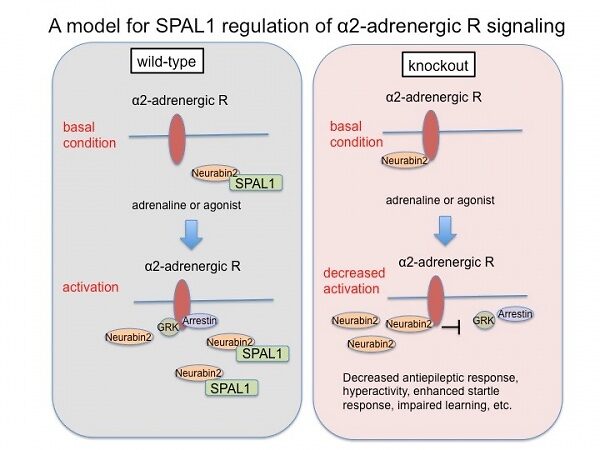"PAL1 interacts with the Neurabin family of proteins and is involved in G Protein-Coupled Receptor signaling" Dr. Ken Matsuura

Date
Location
Description
Speaker: Dr. Ken Matsuura
Assistant Professor, Institute of Molecular and Cellular Biosciences, The University of Tokyo, Japan
Title: PAL1 interacts with the Neurabin family of proteins and is involved in G Protein-Coupled Receptor signaling
Abstract: Signal-induced proliferation-associated 1 like 1 (SPAL1) has been shown to play critical roles in synaptic function of neurons, such as regulation of spine morphology, and suggested to be a key factor in synaptic homeostasis. However, most of the reports used primary cultured neurons, and thus physiological role of SPAL1 in vivo remains unknown. To tackle this issue, we generated Spal1-/- mice. These mutant mice showed no gross developmental defects, and moreover, the distribution of spine head size and PSD size in the hippocampus of Spal1-/- mice were comparable to that of wild-type. Nevertheless, Spal1-/- mice showed hyperactivity, learning impairments and autistic-like social behaviour. In search of a clue for molecular role of SPAL1 in the brain, we performed a rigorous proteomic screen for native interactors of SPAL1 and identified the Neurabin family of proteins, which are known for their involvement in GPCR regulation. Subsequent phenotypic analyses revealed that Spal1-/- mice show an opposite phenotype of Neurabin1-/- and 2-/- mice in epileptic seizure susceptibility and reduced or enhanced sedative response in the GPCR pathway dependent manner. Our results uncover a previously unappreciated role of SPAL1 in the mature brain and may provide novel insight into Neurabin involved GPCR regulation.
Host:
Tadashi Yamamoto, Cell Signal Unit
We look forward to seeing many of you there.
Sincerely,
Kaori Yamashiro
Subscribe to the OIST Calendar: Right-click to download, then open in your calendar application.



